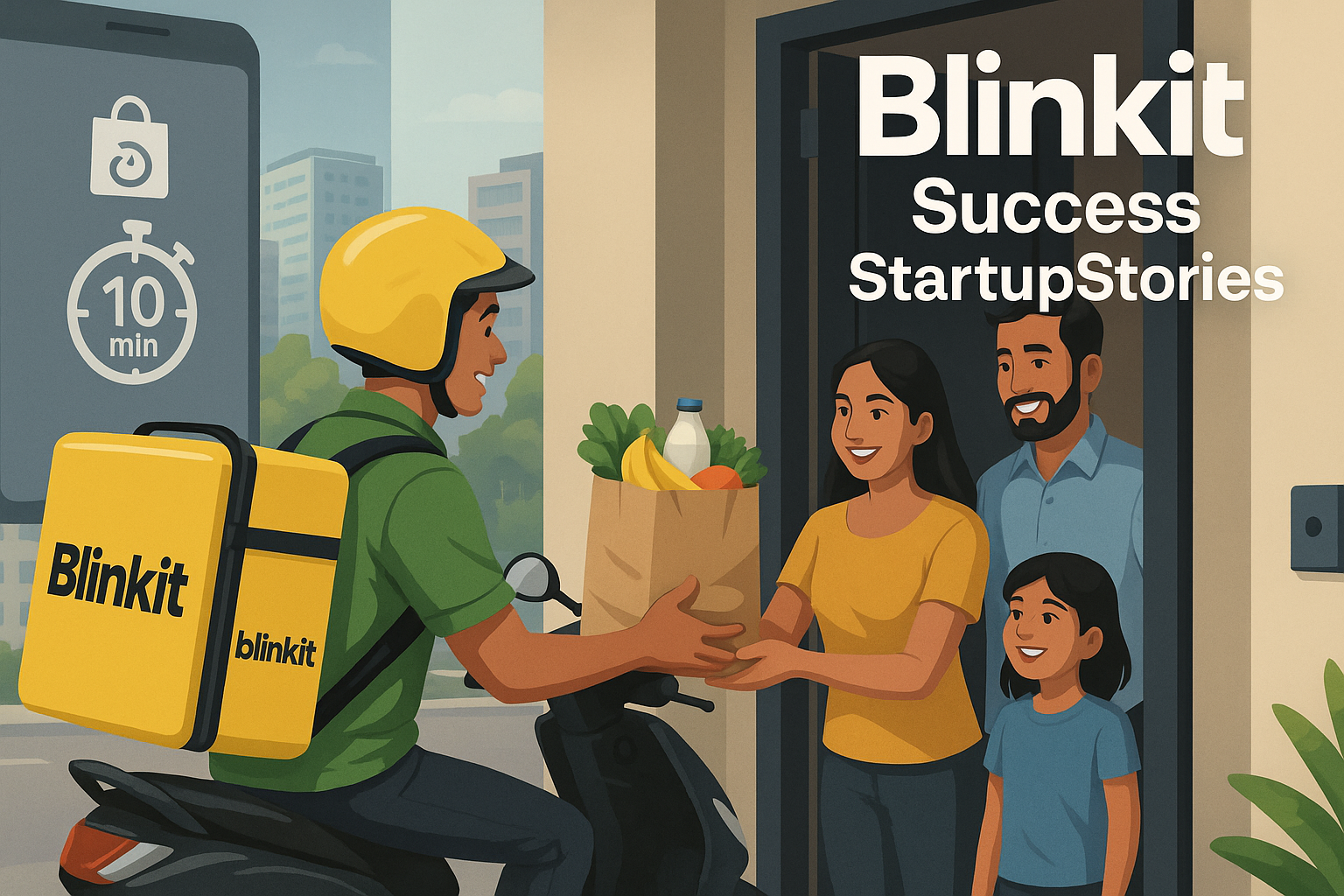In today’s fast-paced world, convenience is king—and Blinkit reigns supreme. Formerly known as Grofers, Blinkit has emerged as one of India’s most trusted names in the quick commerce industry. With a promise of delivering groceries and daily essentials in just minutes, it has revolutionized how Indian households shop. This is the story of how a humble grocery delivery startup turned into a household name, blending speed, tech, and a deep understanding of urban India’s needs.
Blinkit's Early Days: The Grofers Era
Launched in 2013 by Albinder Dhindsa and Saurabh Kumar, Grofers started with a simple mission: to streamline grocery shopping. In its early days, the company acted as a bridge between local kirana stores and customers, ensuring doorstep delivery of everyday essentials. The idea caught on quickly in urban centers like Delhi and Gurugram. However, as the e-commerce landscape evolved, so did consumer expectations—and Grofers knew it had to pivot to stay ahead.
The Big Rebrand: From Grofers to Blinkit
In 2021, Grofers underwent a major transformation—not just in name, but in strategy. Renamed Blinkit to reflect the brand’s new identity, the company committed to a quick commerce model, promising delivery in as little as 10–20 minutes. This rebranding wasn't just cosmetic; it was a signal that the brand was now focused on ultra-fast service and tech-driven logistics to meet the dynamic demands of modern Indian consumers.
Founders with Vision: Albinder Dhindsa and Saurabh Kumar
Albinder Dhindsa, an IIT Delhi alumnus with an MBA from Columbia Business School, brought a global mindset to the business. His co-founder, Saurabh Kumar, came equipped with hands-on expertise in logistics and operations. Together, they crafted a startup culture rooted in speed, innovation, and customer-first thinking. Though Saurabh Kumar later exited Blinkit in 2021, the foundation they laid continues to shape the company’s aggressive growth.
Business Model Built for Speed
Blinkit’s business revolves around 'dark stores'—mini warehouses strategically located across urban areas. These micro-fulfillment centers allow the company to process and deliver orders within a short radius, drastically reducing delivery time. The brand charges nominal delivery fees while maintaining partnerships with local vendors to ensure fresh stock. In-app advertising, loyalty programs, and data-driven inventory management add layers to their revenue model.
A User Experience That Just Works
The Blinkit app is sleek, intuitive, and fast—much like its service. With categories ranging from fresh produce to snacks and personal care, the platform offers a seamless shopping experience. Users can track their orders in real-time, making the process transparent and trustworthy. The company also emphasizes customer support, ensuring every order counts and every concern is heard.
Blinkit vs. The Competition
In the quick commerce space, Blinkit battles some serious contenders—Swiggy Instamart, Zepto, BigBasket, Dunzo, and Amazon Fresh. While most of these platforms offer similar services, Blinkit’s edge lies in its operational efficiency and delivery speed. Its hyper-local warehouse model and data-backed logistics give it a unique advantage, especially in metro cities where every minute matters.
Major Milestones and Achievements
Blinkit became one of India’s first platforms to successfully implement a sub-20-minute delivery model. In 2022, food delivery giant Zomato acquired Blinkit in a strategic move that expanded its service portfolio and operational footprint. The brand has since scaled rapidly, earning accolades for its smart use of AI in inventory and route optimization. Its valuation soared to $13 billion by early 2025—a testament to the model’s scalability and market relevance.
Looking Ahead: Blinkit’s Vision for the Future
Blinkit isn’t resting on its laurels. The company is eyeing expansion into Tier-2 and Tier-3 cities, aiming to bring the quick commerce revolution to a broader audience. Product diversification is also on the cards—with plans to include electronics, home essentials, and even office supplies. Sustainability is another key focus area; Blinkit is investing in electric vehicles and eco-friendly packaging to reduce its carbon footprint. Behind the scenes, machine learning is being deployed to further personalize customer experiences and streamline operations.
Wrapping Up
Blinkit's journey from a simple grocery delivery app to a quick commerce giant is one of innovation, resilience, and customer obsession. By constantly adapting to market needs and technological trends, Blinkit has carved out a niche that didn’t even exist a few years ago. It’s not just about groceries anymore—it’s about redefining how we experience convenience. As it gears up for the next phase of growth, Blinkit stands as a shining example of what’s possible when speed meets smart strategy.
Frequently Asked Questions (FAQs)
Q1. What is Blinkit?
Blinkit is a quick commerce platform that delivers groceries and daily essentials to customers’ doorsteps in as little as 10 minutes.
Q2. Who founded Blinkit and when?
Blinkit was founded in 2013 by Albinder Dhindsa and Saurabh Kumar. It was originally known as Grofers before rebranding in 2021.
Q3. How does Blinkit deliver orders so quickly?
Blinkit uses a network of dark stores—small, hyperlocal warehouses—that are strategically placed near customers to enable fast deliveries.
Q4. What are Blinkit’s main competitors?
Blinkit competes with Swiggy Instamart, Zepto, BigBasket, Dunzo, and Amazon Fresh in the fast-growing quick commerce space.
Q5. What makes Blinkit different from other grocery apps?
Blinkit stands out for its lightning-fast delivery model, local warehouse efficiency, and a tech-driven approach to logistics and customer service.
Q6. Is Blinkit available in smaller cities?
Currently, Blinkit is expanding into Tier-2 and Tier-3 cities as part of its growth strategy beyond metro areas.
Q7. Has Blinkit been acquired?
Yes, Blinkit was acquired by Zomato in 2022, which helped scale its operations and integrate new services.
Q8. Does Blinkit offer anything beyond groceries?
Yes, Blinkit is gradually expanding into categories like electronics, household goods, and more to become a one-stop quick delivery platform.
